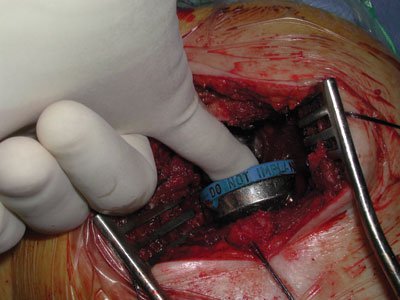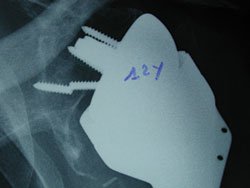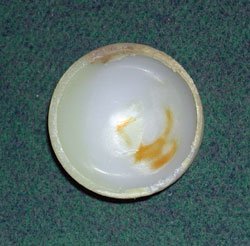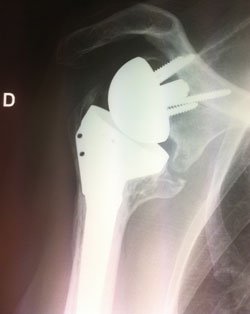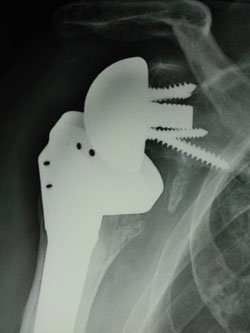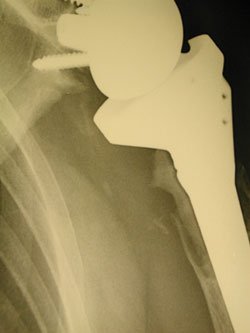High complication rate seen with reverse shoulder arthroplasty for elderly patients
French researchers who treated elderly patients with acute proximal humeral fractures using a standard reverse shoulder prosthesis without re-insertion of the tubercles because of patients’ osteoporosis and poor physiology found that 21% had complications, 42% were unsatisfied with the procedure and 62% had “worrying” images.
“Such results do not allow us to validate in the long term, the concept of reverse shoulder arthroplasty in recent trauma of the proximal humerus,” Jean-Francois Cazeneuve, MD, said during his presentation at the 12th EFORT Congress 2011. “Our elective indication is females, greater than 70 years old with poor physiology, major osteoporosis and for the non-dominate side.”
Cazeneuve and his team studied 37 patients who were treated with Grammont’s Delta reverse shoulder prosthesis (DePuy, Warsaw) from 1993 to 2010.
|
Images: Cazeneuve JF |
“In 1993, we moved to reverse shoulder arthroplasty, because of the difficulty or impossibility to have an efficient re-fixation of the tubercles with a classic topical device in cases of poor physiology and rate osteoporosis,” Cazeneuve said.
The patients had a mean age of 75 years, and many had “frail and poor conditions,” according to Cazeneuve. The investigators used the Constant and Murley scoring system to assess clinical results and the Valenti and Nerot scoring system to evaluate notching. The patients had a mean follow-up of 7.3 years.
Clinical outcomes
There were eight complications including two reflex sympathetic dystrophies, three early dislocations, two deep infections and one case of aseptic loosening that occurred at 12-year follow-up.
The team observed a decrease in the Constant and Murley score between 2-year follow-up and the last follow-up.
“We observed that 42% of the patients were unsatisfied because the results left them unable to use eating utensils to dress independently, to perform activities necessary for personal hygiene in cases where the dominant side was involved, and the patient dropped into dependency,” Cazeneuve said. “The functional results were never equal to the pre-broken state.”
|
|
|
The mean Constant and Murley score decreased from 55 at 2 years to 52 at the last revision “because of an augmentation of the pain and a diminution of the strength, which represented 67% of the mean score for the injured side,” according to the study abstract.
Radiologic outcomes
Radiologic findings showed 2 mm complete glenoid borders in two male patients with 42-mm diameters of the sphere at 4- and 8-year follow-ups. The investigators also found 14 inferior spurs that occurred at a mean of 2.5 years. These were stable after emergence and did not impact patients’ function or show progression on radiographs.
|
|
|
|
The investigators noted that 56% of patients developed scapular notching that appeared before 2-year follow-up, and the notches became more severe with longer follow-up. In all, the researchers pinpointed two patterns of notches — 11 isolated and 10 with “worrying” humeral images, which included four cases with medial proximal humeral bone loss and six with medial bone-cement interface borders. Cazeneuve noted that these could be due to polyethylene disease or osteonecrosis related to the trauma or surgical technique.
The team also observed 48 abnormal radiographic images. When they crossed the clinical and radiological results, they found four notches with worrying humeral images. These cases had a mean Constant score of 41. – by Renee Blisard
Reference:
- Cazeneuve J, CazeneuveJF, Hassan Y, Hilaneh A. Does reverse shoulder arthroplasty work in acute proximal humeral fractures? Paper #131. Presented at the 12th EFORT Congress 2011. June 1-4. Copenhagen, Denmark.

- Jean-Francois Cazeneuve, MD, can be reached at Department of Orthopaedic Surgery, Orthopaedic Centre, Centre Hospitalier, 02000-Laon, France; email: jean-francois.cazeneuve@ch-laon.fr.
- Disclosure: Cazeneuve has no relevant financial disclosures.


